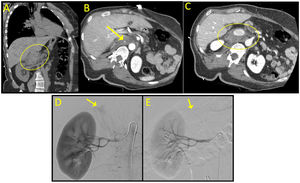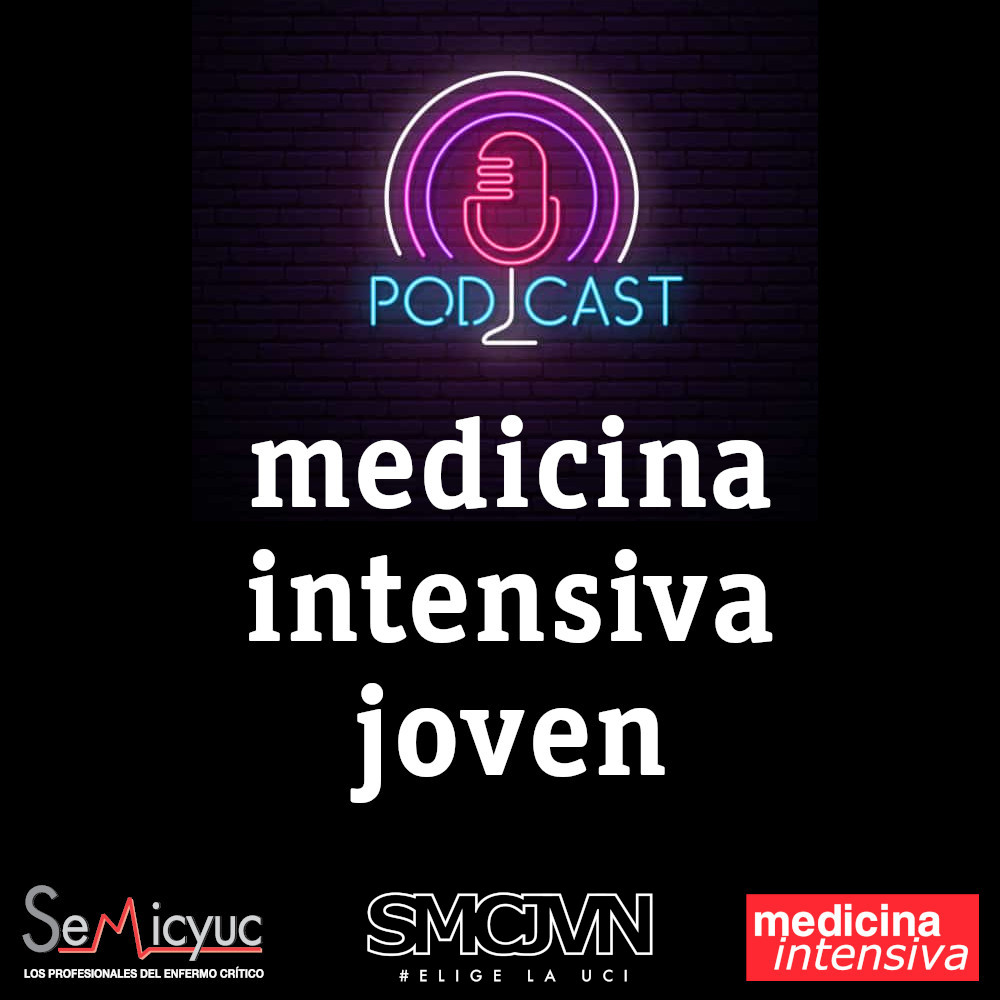This is the case of a polytraumatized 57-year-old woman after falling from a seventh floor. When found the patient’s GCS was 13. A body CT scan reveals the presence of a SAH at the sulci of both temporal lobes, humerus proximal fracture, and multiple non-displaced rib fractures. Also, a localized hematoma of 7 cm in diameter is found in the right suprarenal region (Fig. 1A, yellow circle). Also, the CT scan reveals a thin fat plane of separation with the liver, diaphragmatic pillar, pancreas, and kidney. In the arterial phase active extravasation of contrast is seen (Fig. 1B, yellow arrow) consistent with an arterial hemorrhage. The preservation of a fat plane between the hematoma and the structures surrounding the suprarenal region (Fig. 1C, yellow circle) facilitated finding of the origin of bleeding. Previous knowledge through the CT scan of the probable vessel damaged shortens the necessary time to perform selective angiography and further embolization of the lesion (Fig. 1D, yellow arrow). The right suprarenal artery was embolized with Glubran® 2 + lipiodol (dilution 1:2), which confirmed its complete occlusion and the absence of bleeding in the final angiographic control (Fig. 1E, yellow arrow).
The Impact Factor measures the average number of citations received in a particular year by papers published in the journal during the two preceding years.
© Clarivate Analytics, Journal Citation Reports 2025
SRJ is a prestige metric based on the idea that not all citations are the same. SJR uses a similar algorithm as the Google page rank; it provides a quantitative and qualitative measure of the journal's impact.
See moreSNIP measures contextual citation impact by wighting citations based on the total number of citations in a subject field.
See more





